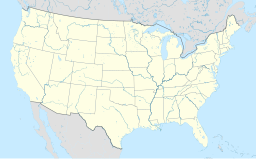Monessen, Pennsylvania
| Monessen | ||
| City | ||
|
||
| Official name: City of Monessen | ||
|
Named for: Monongahela + |
||
| Country | United States | |
|---|---|---|
| State | Pennsylvania | |
| County | Westmoreland | |
| River | Monongahela River | |
| Elevation | 1,128 ft (344 m) | |
| Coordinates | 40°9′15″N 79°52′58″W / 40.15417°N 79.88278°WCoordinates: 40°9′15″N 79°52′58″W / 40.15417°N 79.88278°W | |
| Area | 3.1 sq mi (8.0 km2) | |
| - land | 2.9 sq mi (7.5 km2) | |
| - water | 0.2 sq mi (0.5 km2), 6.45% | |
| Population | 7,720 (2010) | |
| Density | 2,662.1/sq mi (1,027.8/km2) | |
| Settled | 1897 | |
| - Borough incorporated | September 3, 1898 | |
| - City incorporated | September 16, 1921 | |
| Mayor | Lou Mavrakis | |
| Timezone | EST (UTC-5) | |
| - summer (DST) | EDT (UTC-4) | |
| ZIP code | 15062 | |
| Area code | 724 | |
| School District | Monessen City School District | |
Monessen is a city in Westmoreland County, Pennsylvania, United States. The population was 7,720 at the 2010 census. In 1940, 20,257 people lived there. In 1990 the population was 13,026. Monessen is the most southwestern municipality of Westmoreland County. Steel-making was a prominent industry in Monessen, which was a Rust Belt borough in the "Mon Valley" of southwestern Pennsylvania that became a third-class city in 1921. It is near Charleroi and Donora, two similar places with similar histories.
Monessen, named for the Monongahela River and the industrial German city of Essen, was created by land speculators fairly late in the history of the Mon Valley, after neighboring towns had already been settled. The East Side Land Company bought land from various farmers, laid out the streets, and then sold the lots to prospective residents and employers. James M. Schoonmaker, who had made his fortune in coke, owned a controlling interest in the land company. Other investors in the land company who were also immortalized in street names include Philander C. Knox, James H. Reed, H. Sellers McKee, George O. Morgan, and George B. Motheral. In May 1897, National Tin Plate Company, founded by William Donner, began building its mill, thus becoming Monessen’s first employer. Sales of lots began on July 27, 1897, for the general public and other employers. Monessen became a borough on September 3, 1898.
Monessen experienced rapid growth in the first two decades of the twentieth century, the population increasing from 2,197 in 1900 to 11,775 in 1910 and then to 18,179 in 1920.
While there were many companies operating in Monessen, the largest employer was Pittsburgh Steel Company, later renamed Wheeling-Pittsburgh Steel. In a practice that is shocking by today’s standards (and not limited to Monessen), pay was determined by ethnic background. For example, a Welsh immigrant would be paid more than an Italian immigrant. A normal workweek was 84 hours (7 days times 12 hours). Employers did not adopt the eight-hour workday until the 1920s.
...
Wikipedia




